Our environments affect our experience of life. Although each space in the home is important, from the foyer to the kitchen, many of our most personal practices happen in the bathroom. It’s where we wash and assemble ourselves to present to the outside world, and it’s where we should feel the most relaxed, and most comfortable in our skin. Here, Dering Hall designers, architects, and builders offer their best tips for creating a peaceful, intimate bathroom that helps us recover from the stressors of modern life.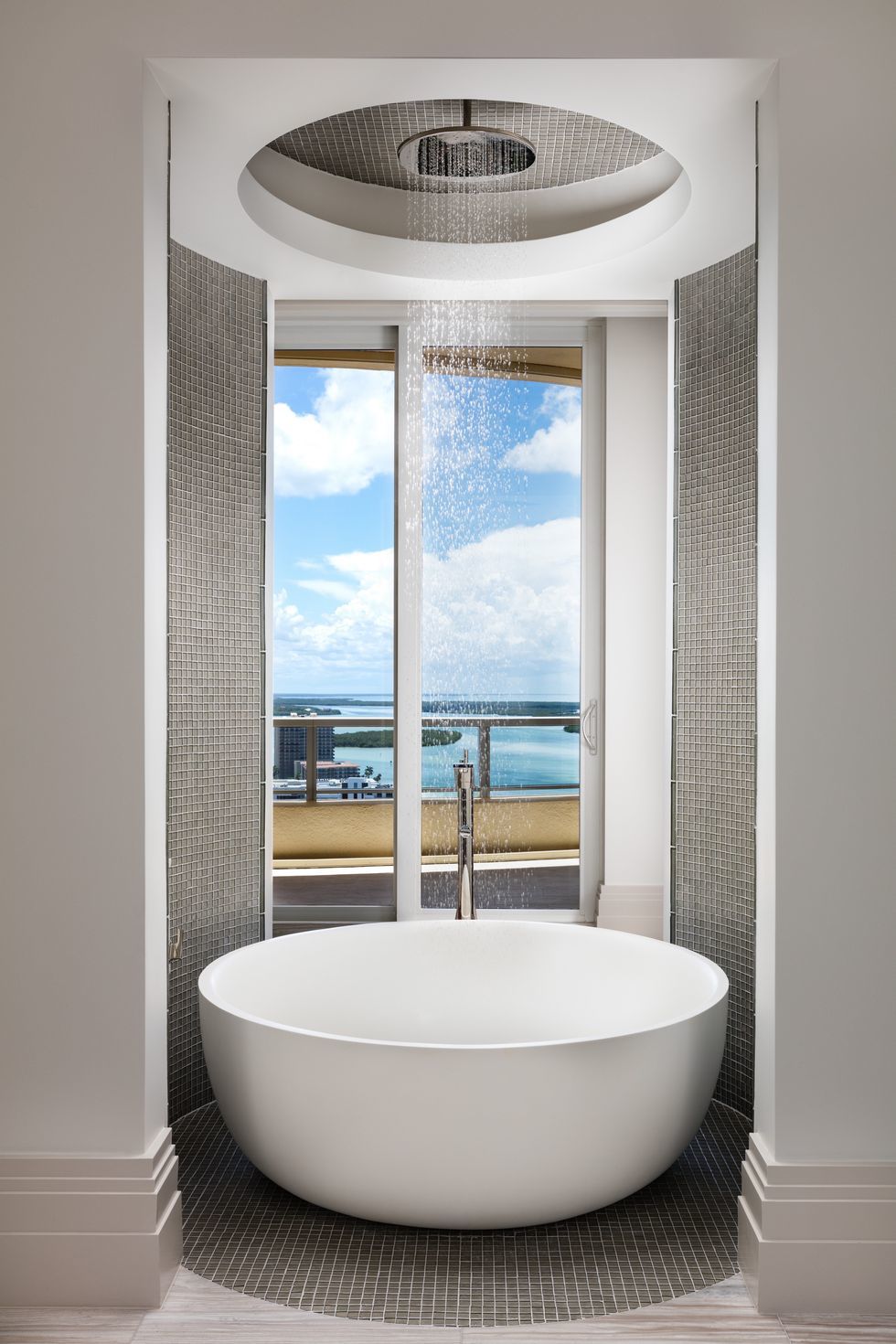
Put Function First
The importance of function comes as no surprise to experienced designers. However, as architect Mark. P. Finlay suggests, well-planned, efficient designs are also key to creating a relaxing bathroom. “An easily maintained bathroom is truly a lifesaver,” says Finlay. Morning routines become infinitely easier with segregated spaces for the various rituals of getting ready. At night, if you love to soak in the tub, a large bathtub should serve as the centerpiece of the space, according to Finlay, and if you prefer long, hot showers, the shower should include many shower heads that can vary the water output. “There’s nothing more luxurious than a space tailored to your preferences,” Finlay says.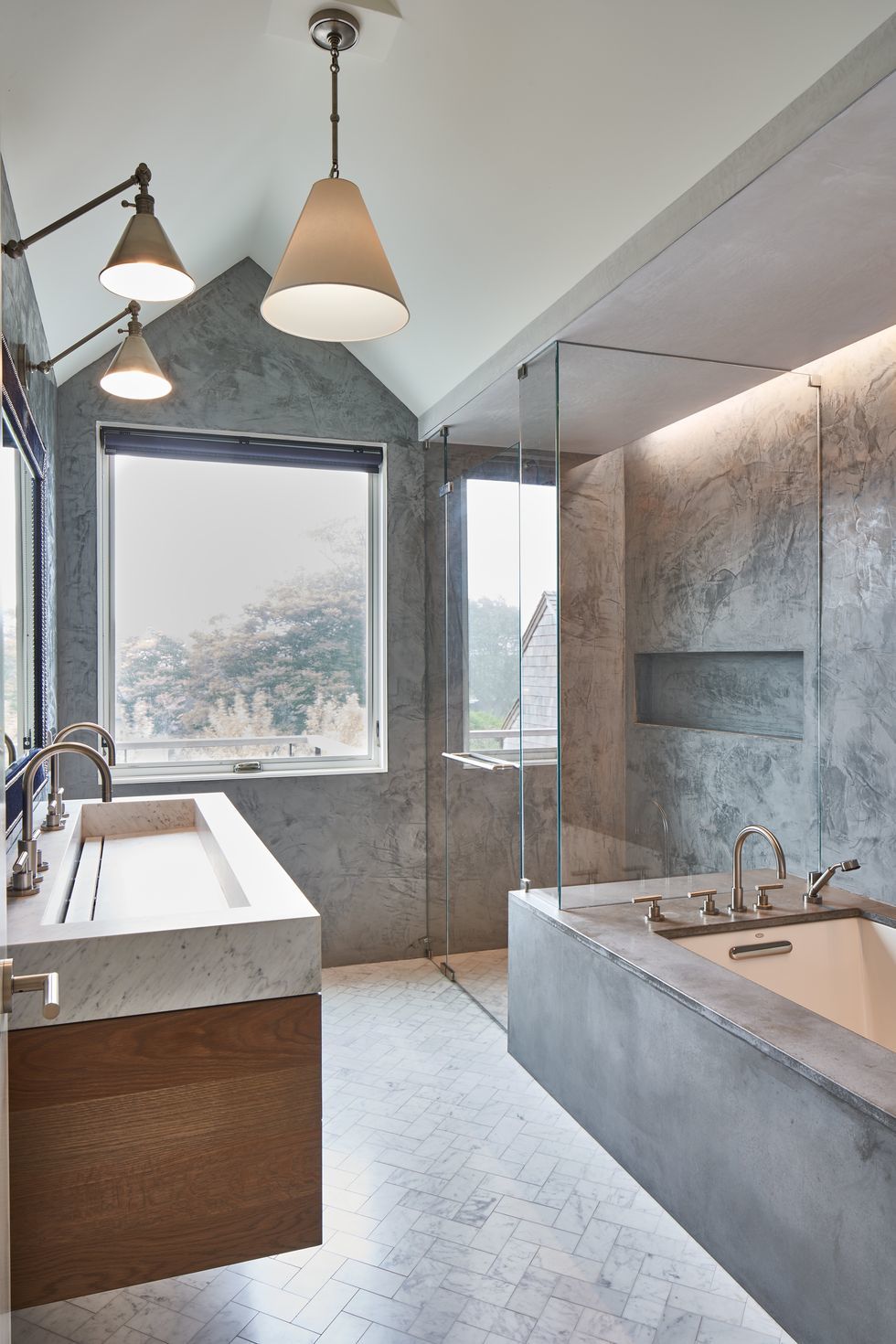
Make the Most of Materials
In a bathroom, large, uninterrupted walls of stone, plaster, or concrete can offer a sense of permanence. “We are noticing cleaner, more modern finishes with larger slabs on walls and shower walls as opposed to subway tile,” says Kyle Stokkers from Stokkers & Company, a building company based in Huntington, New York.
Slabs are often characteristic of minimalism, too, which tends toward uncluttered spaces, with each object of the design carefully selected for beauty and function. "Stick to a limited palette of materials and make them luxurious," recommends architect Blaze Makoid. 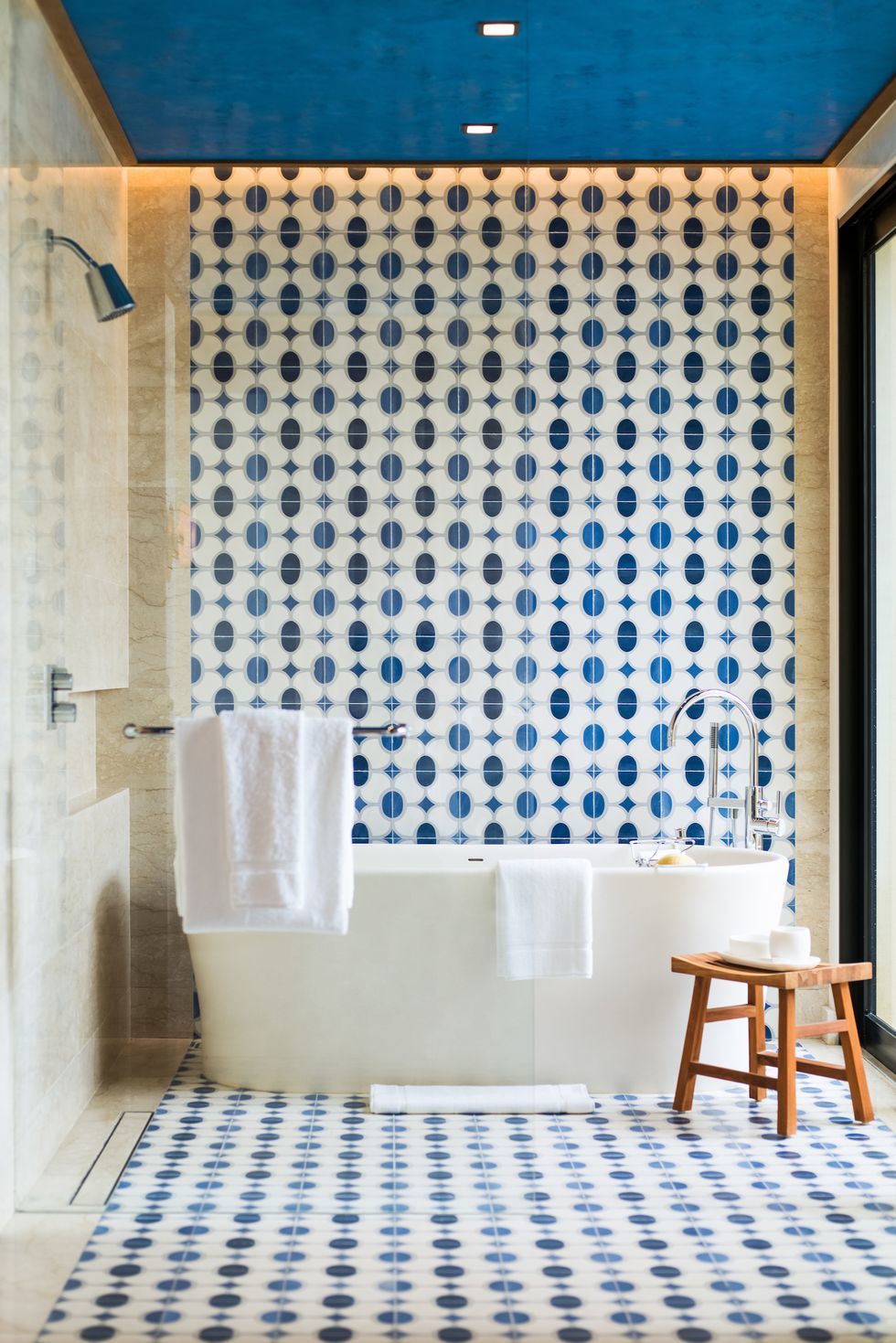
Find Inspiration in the Environment
Context is rarely overlooked in the best designs, and bathrooms are no exception. Whenever a space achieves cohesion between its design and surrounding environment, it becomes a little more relaxing.
BAMO, a firm based in San Francisco, designs luxurious hotels in far-flung locales, from Milan to Dubai to Bora Bora, and their clients often come to them after staying in one of their hotels. This bath is one aspect of a resort they designed in Cabo that “invites guests to effortlessly experience the relationship between indoor and outdoor living,” says Janet Mercier, the BAMO project designer for the resort.
Find Inspiration in the Environment
Context is rarely overlooked in the best designs, and bathrooms are no exception. Whenever a space achieves cohesion between its design and surrounding environment, it becomes a little more relaxing.
BAMO, a firm based in San Francisco, designs luxurious hotels in far-flung locales, from Milan to Dubai to Bora Bora, and their clients often come to them after staying in one of their hotels. This bath is one aspect of a resort they designed in Cabo that “invites guests to effortlessly experience the relationship between indoor and outdoor living,” says Janet Mercier, the BAMO project designer for the resort.
Decide on a Hardware Style
Hardware offers an opportunity to enhance the experiences of the design, offering contrast against softer stones or other materials. Of the design to the left, Douglas Wright of Douglas C. Wright Architects in New York City says, "I wanted to create a warm, enveloping, soothing space in a rich surrounding. The golds and deep browns/blacks of the metal and stone reinforce each other, while the gentle, flowing lines of the stone contrast with the hard lines of the metal." 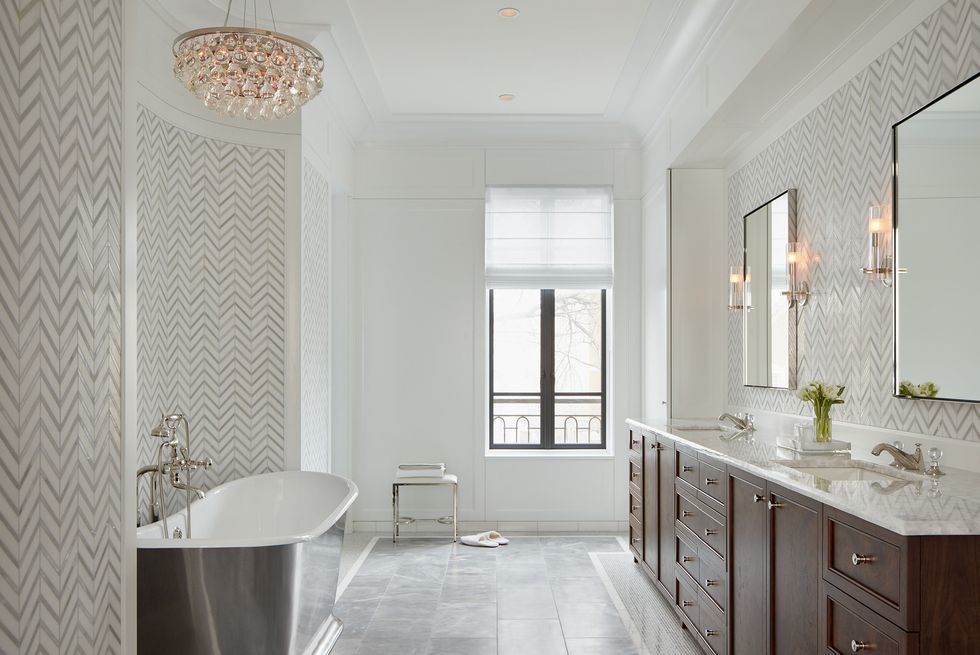
Keep it Curved
Curved architectural details communicate relaxation. In a room, a curved wall can provide unexpected softness, bringing a new layer of tranquility to the ambience. For the space pictured above, one of the most unique details is "the curved wall behind the freestanding tub that features a chevron pattern stone tile inlay,” says Roger Owen of BGD&C Custom Homes, a home builder in Chicago.
A curved space for the tub can also enhance privacy and connection, as Finlay suggests. In the bath he designed (pictured earlier), he was partially inspired to create curved walls around the tub to enhance the intimacy of the space. "Another motivation for the curved walls was so that the tub wasn’t floating in the middle of the room by itself and was instead being ‘hugged’ by the curved walls," he says. 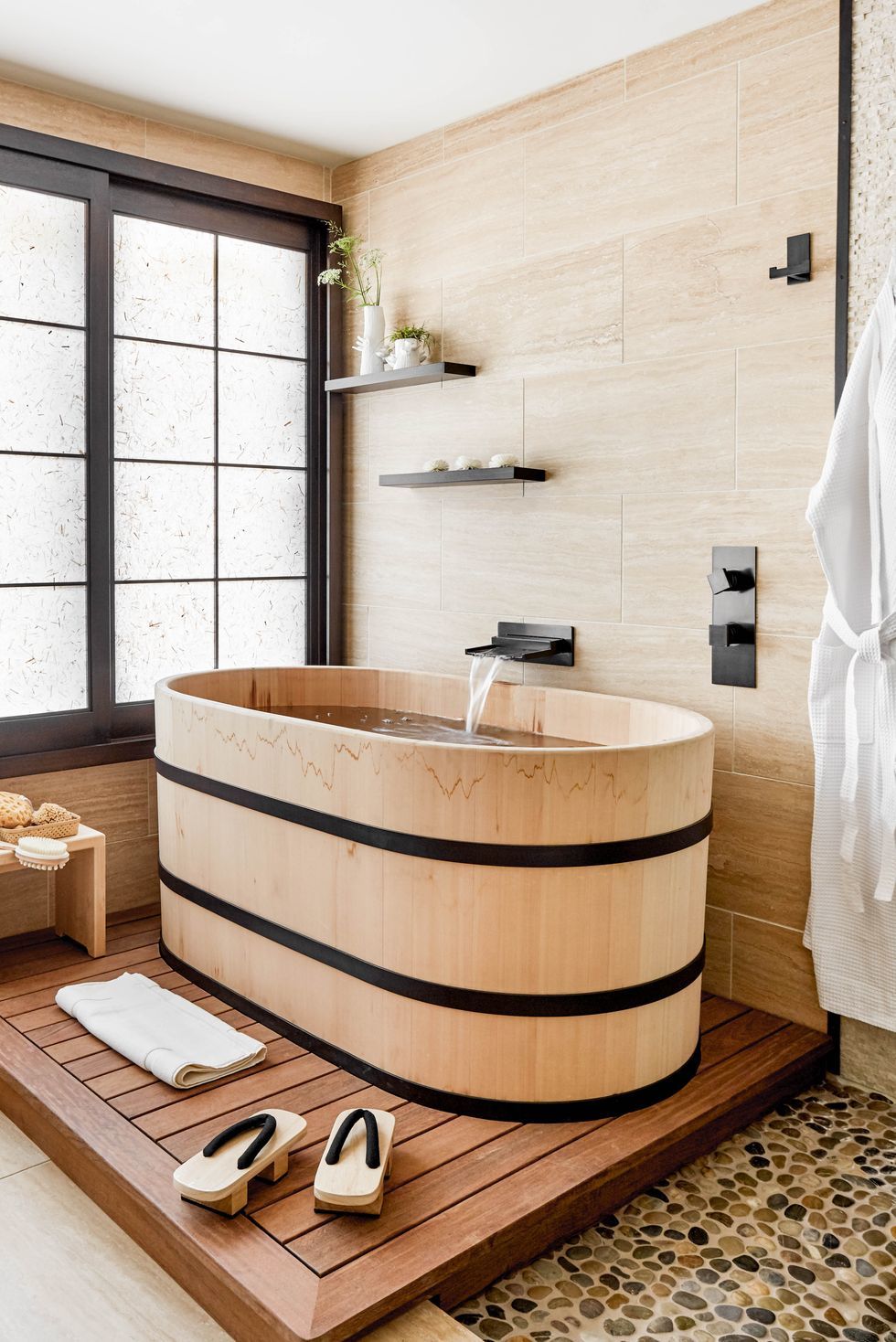
Opt for a Pared-Down Color Palette
If a bold bathroom is your goal, by all means select colorful wallcoverings and ornate, over-the-top accessories. There's a time, place, and client for every style. For clients who prefer calm above all else, a monochromatic environment -especially one in a natural wood hue -can help create a peaceful environment in a master bath. Ann Stillman O’Leary, the designer behind the image to the left, says that a relaxing space is “earthly yet heavenly,” gesturing toward the idea that a tranquil bathroom should keep you grounded in your body, and capable of sensuality, while also inspiring daydreams.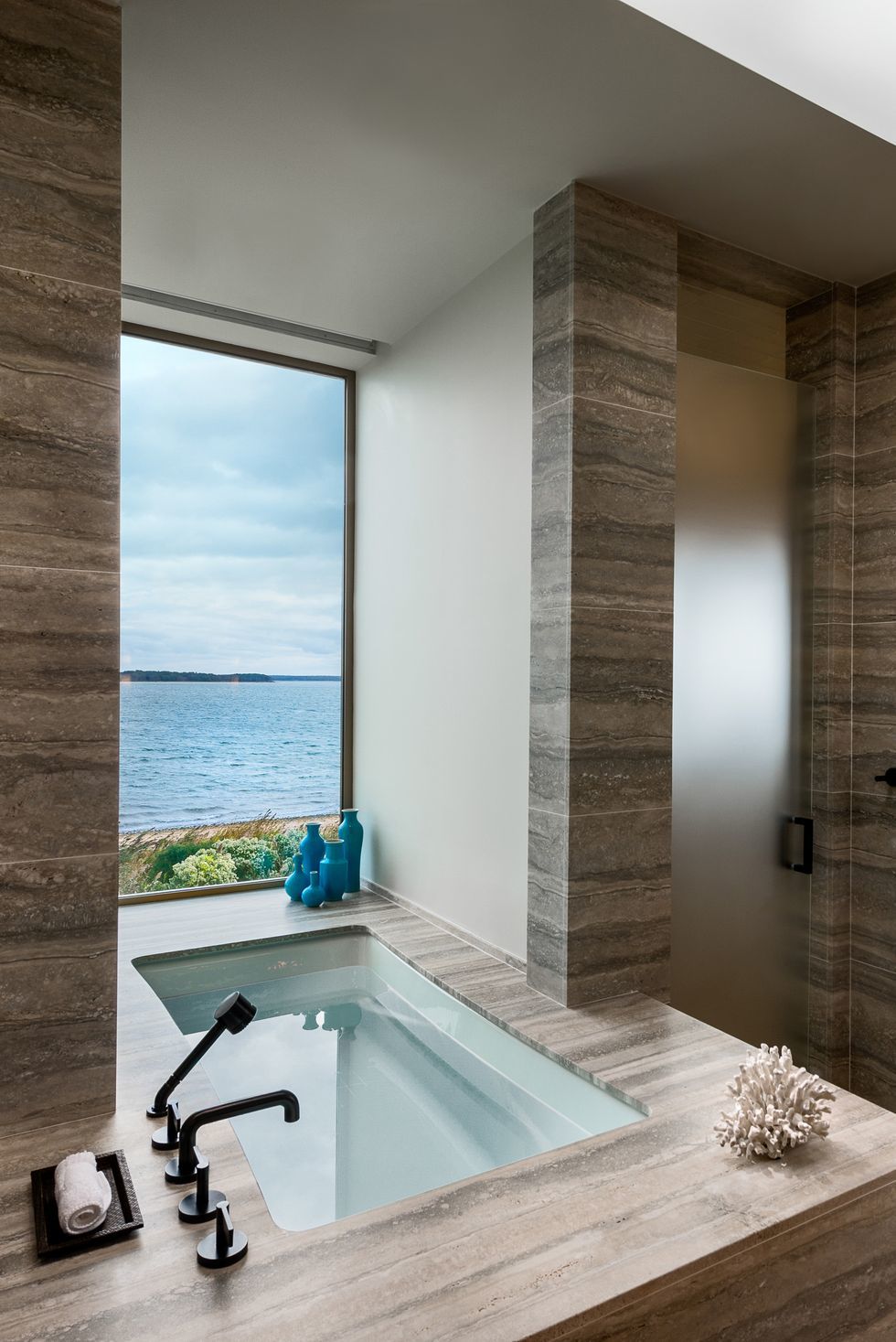
Consider Creative Lighting
Lighting is key in a bathroom. In the tub area, chandeliers are a classic choice, and recessed lighting, as shown above, offers another way to bring light to a space. In terms of natural light, windows help merge interior and exterior environments; innovative shades or artistic curtains can block out the outside world when necessary. A skylight provides another alternative source of light, and it also maintains privacy in a peaceful bath, especially when paired with stark, artful architecture. “I love the serenity of this design, particularly the way the bathtub is nestled in between the stone walls with just the single piece of glass which overlooks the bay,” says Makoid of this ocean-front bathroom that he designed. “I also like the indirect light that we achieved with the linear skylight.” 
Bring in Plants
In different sizes, plants can also serve to break up a space, or build another level to the design that can be hard to achieve with other kinds of accessories. “They add warmth to the sometimes cold surfaces of a bathroom," says Michelle Dirkse, an interior designer based in Seattle.
Here, Dirkse used plants to craft a tranquil ambience as well as to achieve a haunting sensuality. “Our clients asked that their remodel transform their Historic Landmark home into a home inspired by a ‘haunted mansion or the back stage of Moulin Rouge,'” she says. “In the bathroom, this translated to a traditional clawfoot bathtub with a perfectly rusted exterior, traditional plumbing fixtures, lace privacy curtains, and Timorous Beasties fabric for an antique stool.”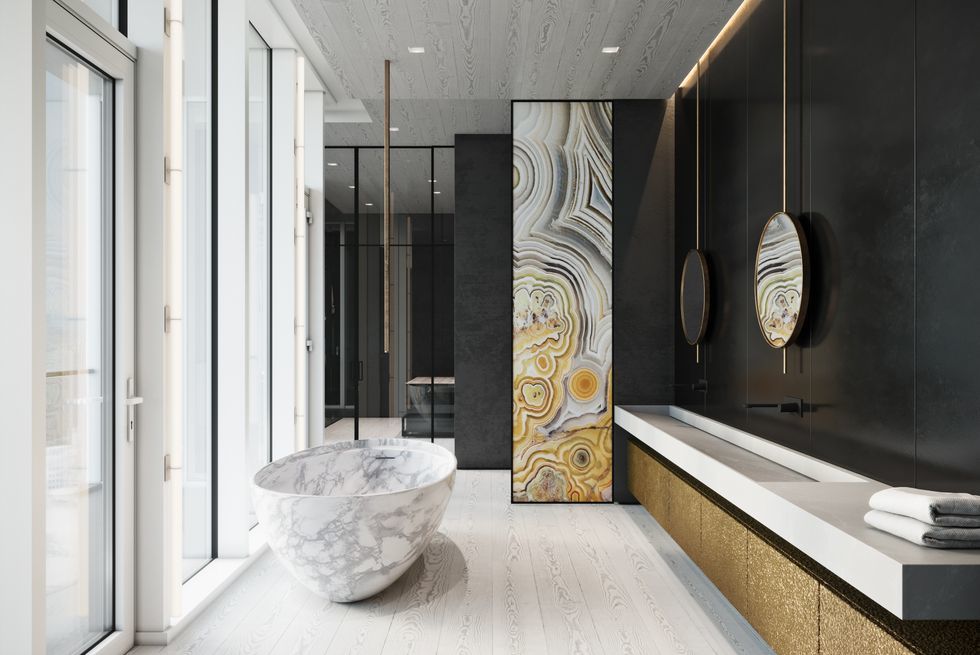
Try a Freestanding Tub
A freestanding tub provides a visual focal point for a room, and it offers a perfectly relaxing space to unwind. “A beautiful freestanding tub is a good place to start, and openness, simplicity, and a great material selection are certainly key,” says John Beckmann of Axis Mundi, offering advice on creating a relaxing bath. Beckmann has noticed that clients are asking for larger bathrooms and spending more time in them, and this can alter approaches to designing bathrooms, as they're meant more now for living (and soaking) than just passing through. In response, he says, "I always strive for very clean and well thought-out details to eliminate unnecessary lines and distractions."
A freestanding tub can also incorporate unusual materials. Stillman O'Leary selected a unique, wooden tub for a space she designed, pictured earlier. "The Ofuro tub is made of fragrant Hinoki wood and was imported from Japan," she says of the design.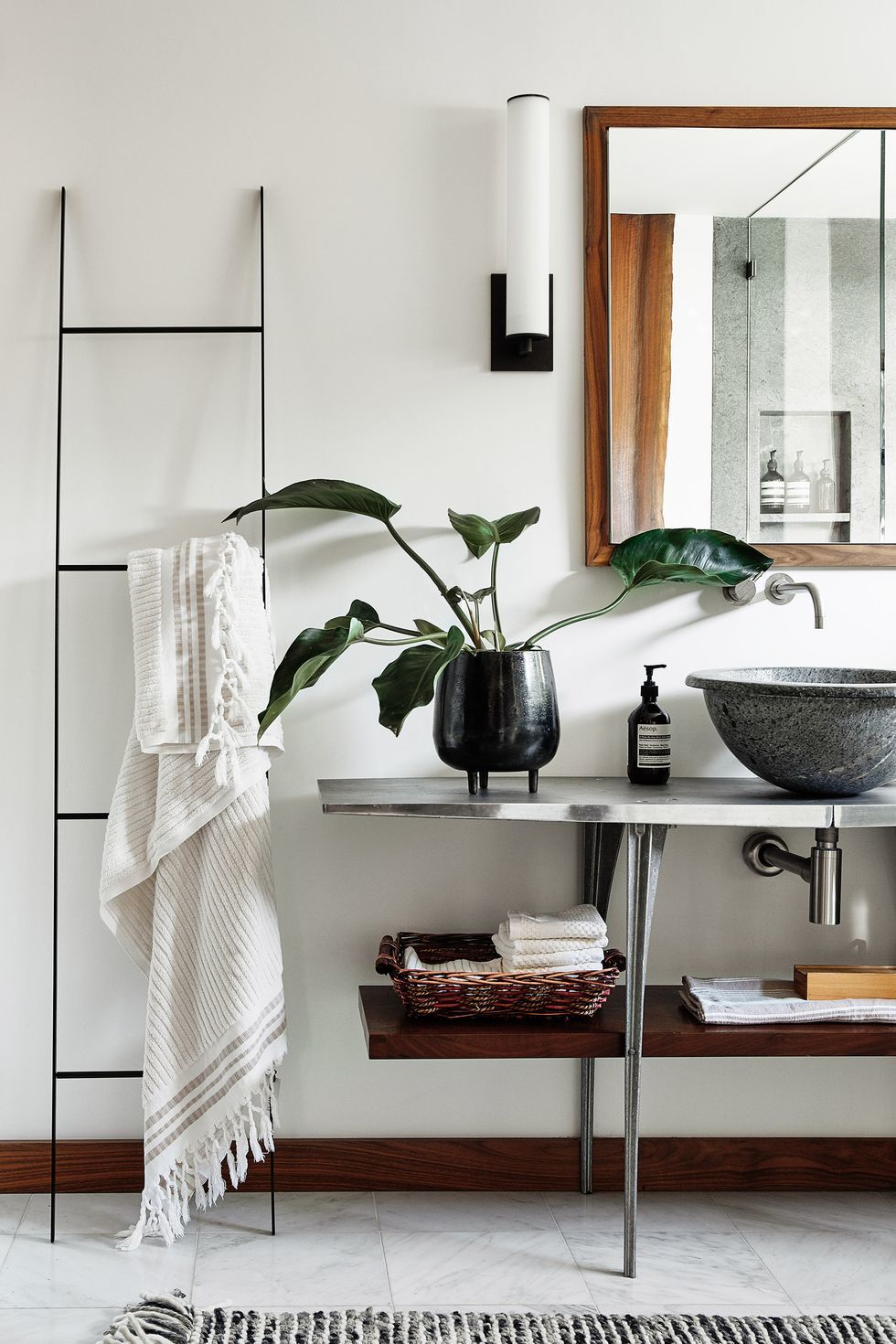
Finish with Natural and Soulful Touches
Carefully placed finishing touches usher in an aura of calm. Lisa Staprans of Staprans Design believes that each artisanal object should contribute to what she calls a “soulful design.” In the bathroom pictured to the left, Staprans interpreted this philosophy to rework the client’s beloved console table, adding a solid walnut lower shelf to bring in natural wood. The vessel sink is made from hand-carved soapstone. “This master bath is the client's bathing sanctuary,” says Staprans.
Beautiful accessories also impart a bit of luxury. “For our clients, a relaxing space is one that’s free of clutter and impeccably designed,” says Brad Zeligson, president of Labrazel, a company specializing in elegant bath accessories. “Every detail matters - from the design and materials to the craftsmanship.”



![A Tranquil Jungle House That Incorporates Japanese Ethos [Video]](https://asean2.ainewslabs.com/images/22/08/b-2ennetkmmnn_t.jpg)









